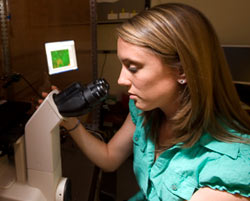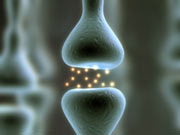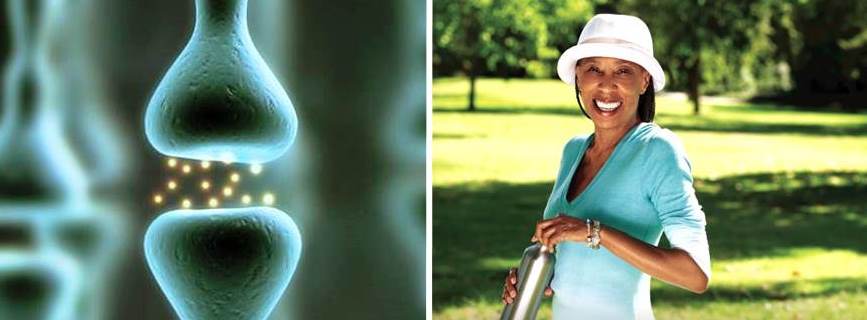Myasthenia gravis and Lambert-Eaton Syndrome
Faculty members in the UC Davis Department of Neurology are among the nation’s experts in rare neuromuscular diseases such as myasthenia gravis, Lambert-Eaton Syndrome and inherited forms of myasthenia. These diseases are characterized by muscle weakness caused by disturbances in the normal communication between nerves and muscles.
 The department’s faculty members run one of the largest myasthenia gravis clinics in the United States, treating more than 400 patients per year from across the Western U.S. While these diseases are relatively uncommon, they are very serious. The good news is that they respond well to drug therapy and other available treatments.
The department’s faculty members run one of the largest myasthenia gravis clinics in the United States, treating more than 400 patients per year from across the Western U.S. While these diseases are relatively uncommon, they are very serious. The good news is that they respond well to drug therapy and other available treatments.
Ongoing research in the department is aimed at developing new drug treatments for these debilitating diseases. While our physician researchers are busy treating patients, they are also running clinical trials and conducting basic research with the hope of offering more treatment options to patients nationwide in the future.
 Myasthenia gravis is an autoimmune disease in which antibodies produced by the body attack the receptors responsible for binding neurotransmitters, brain chemicals, on the muscles side of the synapse, the space between the end of a nerve cell and the muscle cell. Specifically, the neurotransmitter, acetylcholine, normally transmits impulses between nerves and muscles. In myasthenia gravis, acetylcholine is blocked by antibodies to its receptor.
Myasthenia gravis is an autoimmune disease in which antibodies produced by the body attack the receptors responsible for binding neurotransmitters, brain chemicals, on the muscles side of the synapse, the space between the end of a nerve cell and the muscle cell. Specifically, the neurotransmitter, acetylcholine, normally transmits impulses between nerves and muscles. In myasthenia gravis, acetylcholine is blocked by antibodies to its receptor.
Department researchers are working with animal models of this disease that they have developed to identify how these antibodies cause problems. They are also working to develop drug treatments to counteract those effects.
For more information about Myasthenia Gravis, please see the NIH Fact Sheet.
Lambert-Eaton Syndrome, also called myasthenic syndrome, is a disorder with symptoms very similar to those of myasthenia gravis. In Lambert-Eaton syndrome, the interruption in muscle-nerve communication is caused by an insufficient release of neurotransmitter by the nerve cell. Researchers are also trying to understand these mechanisms with hopes of developing new drug treatments.
To learn more about Lambert-Eaton Syndrome, please visit About Lambert-Eaton Myasthenic Syndrome.
Inherited forms of myasthenia are not autoimmune. These disorders involve components of the synapse. The research goal is to figure out what goes wrong because of these inherited mutations and how to counteract it. Luckily, animal models also exist for this research.

